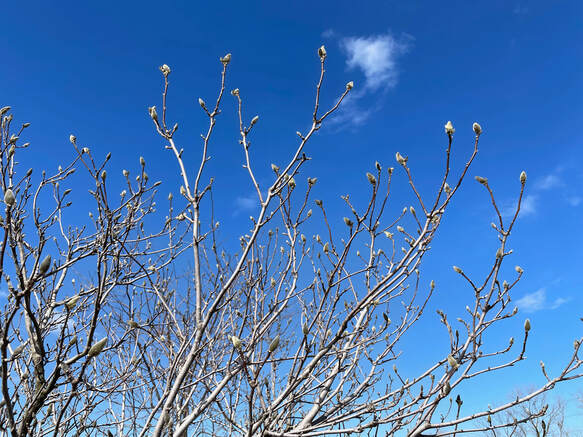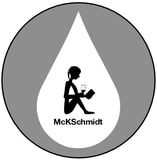|
When I saw the effects COVID’s social isolation was having on my mother, the difficult physical and mental changes that occur with age, witnessed the deep sorrow lingering from the deaths of her husband and dog, and years later, from the death of her twin, I introduced the excitement of outdoor adventures into our weekly routine. Walking arm-in-arm through the city and county parks of Holland, we laughed, traded memories, discussed birds, flowers, wetlands, rivers, and lakes. But it was one flowering tree, in one park, and one bench, that showed me how nature can heal the spirit, and how important it is to make nature easily accessible to all seniors in all communities.
By 2050, one in four people in the United States will be over the age of 60. According to a 2007 report issued by the National Institute on Aging and the National Institutes of Health, between 2005 and 2030, the 85-and-over population is projected to increase 151 percent across the globe compared to 21 percent for those under 65. While COVID-19 is not reflected in the numbers, chronic diseases such as dementia, Alzheimer’s, cancer, cardiovascular disease, arthritis, and diabetes are likely causes of death in those over 85. Such diseases often require long term care that consumes public and family resources. Worse, the diseases gnaw at the mental and emotional health of seniors and family members. But nature has the power to heal. An increasing body of research suggests regular contact with nature can improve short-term memory loss, reduce inflammation, recharge immune systems, diminish a sense of isolation, and lower the overall risk of early death. And it doesn’t take that much time. According to one study, just two hours a week can make a difference. Not all seniors have a retired daughter living seven miles away, able to make nature accessible. Nor does every daughter or son have a parent or grandparent healthy enough to walk the sidewalks and paths of our public parks. And while Mother lives in an apartment with windows opening to wetlands filled with the lively entertainment of red-winged blackbirds and ducks, the soothing sight of water and cattails, not everyone is so fortunate. Can communities make access to nature easier for the growing senior population? When we began our outdoor adventures, Mother could walk unassisted for a long mile on any type of path. Over the last eight years, she has transitioned from walking independently to arm-in-arm to cane to walker. Uneven surfaces and cracks matter. So does the slope of the path. Grass, sand or woodchip trails are no longer a possibility, asphalt or concrete essential. Fear of falling haunts us both. Over 23 public and private parks are within ten miles of Mother’s apartment making access to nature possible. But it’s not always easy. Favorite spaces boil down to paths, benches, trees, and safety. Now over 95, Mother needs more frequent pauses, comfortable benches on which to rest, preferably benches shaded by trees that protect eyes sensitive to light and paper-thin skin susceptible to cancer; that open the door to sensory stimulation created by leaves that flutter, squirrels that dart, birds that chatter, and a vast array of colors and textures. The benches need to be comfortable, to include complete backs, preferably made of a wood-like product so as to be resistant to temperature variations, placed at the same height from ground to seat. Research points to the importance of placing benches every ten yards for a senior-friendly park. I’ve never counted the steps but know that more is better with each passing year. While the majority of parks in our community are clean, wheelchair-accessible with ample parking, there is no “elder space,” a designated area where we do not have to worry about children accidentally running into us while chasing a ball, skateboarding or riding a bike. Our favorite park is Windmill Island—not just because of the Jane tree, a tree bearing her same name and a nearby bench placed on her behalf commemorating a poem she wrote about her twin—but because of the many docents on site who keep “eyes” on visitors to help everyone stay safe. And there are restrooms. In statistical terms, Mother is an “n” of one. However, I do not think her needs unique. As the senior population mushrooms in our communities, it is to our collective advantage to solicit their input, prioritize their needs and find ways to create a more nature-friendly environment. And while the research shows nature can have a positive effect on one’s health, for Mother and me there was more. Nature brought us together on our respective journeys to find inner peace, to live with joy. Such journeys do not stop when one turns 65. If anything, they become more urgent. As seen in the Holland Sentinel, April 13, 2022.
0 Comments
Leave a Reply. |
From briefcase to pen, paper and camera, one woman's journey to influence
how we care for the environment, our seniors, each other. Available
from your local bookstore or online retailer 
The Ideal Gift Tiny Treasures, a collection of wildflower photographs and poetic prose, available by contacting me. The 2nd Edition of Tiny Treasures is designed for use on PCs, tablets, and phones and is available at online stores. To learn more, click on the Ibook/Ebook button below:
|




 RSS Feed
RSS Feed
